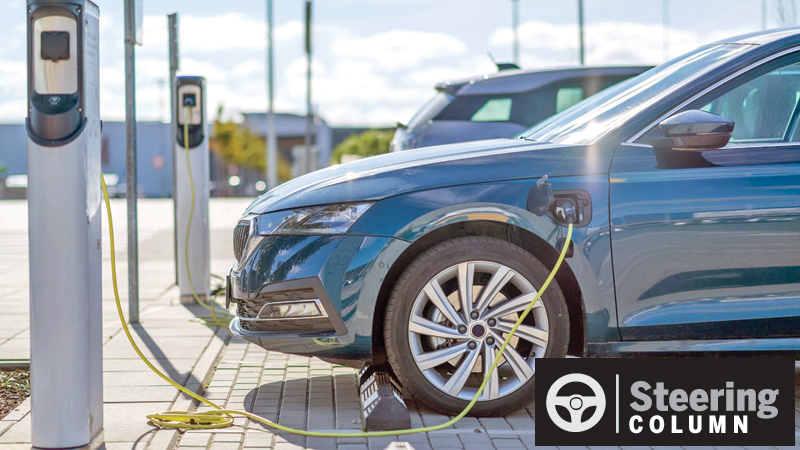As we have stated in this column previously, there are several reasons for the present high prices of brand new cars. Sri Lankans have an opportunity to purchase brand new imported cars after almost five years, albeit at prices that are way beyond the prices that prevailed in 2019, the last full year in which private car imports were permitted.
One reason is that most manufacturers have increased their sticker prices due to supply chain, logistics and inflation issues in the midst of three major wars (Israel-Iran, Israel-Gaza and Russia Ukraine). Sometimes this could be as much as US$ 5,000. Moreover, Insurance and Freight costs have also gone up due to the prevailing volatile situation, leading to higher CIF (Cost, Insurance and Freight) prices at the port of destination. Moreover, within the last five years, the Sri Lanka Rupee has depreciated against the US Dollar by a considerable margin, hovering around the Rs.300 to the US Dollar mark. In 2019, it was only around Rs.180.
Given these factors, it is not surprising that new vehicles command a higher price. Still, they would not be so high if not for the very high tax and duty rates, which can be as much as 400 percent for certain categories of private vehicles. Understandably, in the present economic context (the country is still recovering from the meltdown of 2022), the Government cannot go back to the 100 percent tax and duty formula that prevailed earlier. The Government has targeted revenue of at least Rs.300 billion in the first year from car imports and judging by the brisk sales, this may be entirely possible.
Still, there are some glaring anomalies that may actually hurt the Government’s chances of achieving this target, vis-à-vis electric vehicles (EVs). As we are well aware, different tax and excise duty bands apply at different displacement points for fossil fuel engines at 1 litre, 1.2 litres, 1.3 litres, 1.5 litres, 1.6 litres, 2 litres, 2.5 litres, 3 litres, 3.5 litres, 4 litres and 5 litres. The penalty for choosing a higher engine capacity could be very steep – sometimes there is a huge Rs. 50 million gap between the 2 litre and 3 litre models of the same brand and/or model. This is based on the assumption that the higher engine capacity model consumes more fuel, which is mostly, if not always, correct.
But the authorities seem to have applied this same logic to EVs or New Energy Vehicles (NEVs) based on their battery size and output power, which is not a healthy approach at all. After all, the more EVs we have, the more fuel (and foreign exchange) we save, even if most of them are recharged at home. Just to quote one example, there is a glaring price difference between the Dynamic, Premium and Performance models of a particular EV that is very popular among Sri Lankans.
In this case, the base Dynamic model has a 100 kW output from a 61 kWh battery, giving a projected range of 500 Km. This commands a price of Rs. 20 million, which is fairly reasonable in the context of the present pricing formula. But if you want to step up to the Premium trim, which has a maximum power of 230 kW from a 82 kWh battery (projected range 650 Km), you will have to part with a staggering Rs.54 million, which is a 34 million “premium” over the standard Dynamic model. Worse, if you want to opt for the more powerful twin-motor AWD Performance model (with the same battery capacity, though), ask your bank manager to hand over a cheque for Rs. 78 million, a difference of Rs. 24 million from the previous model.
Something is wrong somewhere in this pricing policy, which can only be explained by higher tax/duty slabs for the higher output power and battery capacities since overseas prices for the three different models do not indicate such a vast difference in the pricing structure. To cite one example, the Dynamic version of the car in question costs AU$ 47,000 (approx Rs. 9 million) in Australia, while the Premium version costs AU$ 53,000 (approx Rs. 10 million). Thus there simply is no way that the price difference could be as much as Rs. 34 million, unless the buyer is taxed blind here for a modest increase in battery capacity and output power. Even the highest Performance trim commands a price of only AU$ 62,000 (approx Rs. 12 million), though the range takes a hit in this avatar.
This means that anyone who wants to go for the “sweet spot” Premium version of this EV is severely punished for seeking a slightly bigger battery and output power. This should not be the case, as electricity consumption for recharging the battery is only marginally higher especially at a DC supercharger. Besides, it does go further to compensate for that slightly high intake. Clearly, our policy makers and Customs officials must undertake a rational review of the EV duty structure without making an apples-for-apples comparison with their Internal Combustion Engine (ICE) counterparts and make substantial adjustments where necessary. They must not miss the wood for the trees by clinging on to a misguided EV policy
****
Write to us
If you would like to comment on one of our articles or contribute an article of your own, reach us by email: [email protected].
If you would like to advertise on these pages, contact Advertising on 011-2429311.






